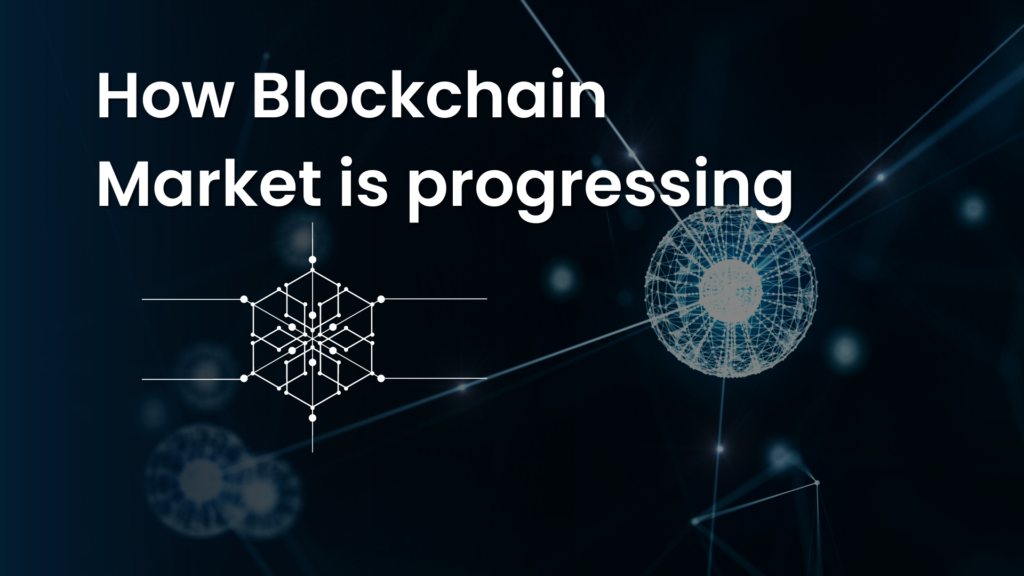CXO TECH
UPDATES
How Blockchain Market is progressing
The following is an interview with Ashish Bansal, Senior Principal, Global Products and Technology, GSK, conducted by CIO Insider magazine.

Ashish is a results-driven technology leader who has pioneered and managed complex IT solution designs, including the creation of a digital roadmap for large MNC shared services and startups. Ashish progressed from a core technical specialist role to a leadership role as a management graduate. Over the past 20 years, he has successfully managed multiple shifting priorities and demands, as well as read/analyse/interpret technical manuals and agreements. Possess international working experience and have been recognised at the vertical, company wide, and industrywide levels for outstanding performance, adherence to company values, and implementation of innovative solutions.
According to MarketsandMarkets Research, the Blockchain market will be worth $ 67.4 billion by 2026. What factors, in your opinion, are driving this growth?
Blockchain is hastening digital transformation in a variety of industries, including the pharmaceutical industry, which is plagued by a lack of transparency, difficulty tracking products, a lack of trust, and the shipment of expired products. Recently, the proliferation of blockchain technology research, projects, and discussions has piqued the interest of both researchers and practitioners, particularly in the proven areas of Logistics, Finance, and Supply Chain areas in the Pharmaceutical Industry in order to bring more transparency, reduce transaction time, keep data secure, and have a cost-effective solution with irreversible transaction capability. Given the properties of blockchain technology, particularly the way it enables decentralisation, transparency, trust, anonymity, and stability, its use in the pharmaceutical industry has been identified as a viable way to combat counterfeit drug distribution.
Blockchains can be used to track the origin of pharmaceuticals, drug transport, and raw material procurement. Additionally, blockchain technology reduces the number of intermediaries involved in the pharmaceutical process, lowering costs and improving safety.
How is cryptocurrency influencing block chain adoption? What are the causes of cryptocurrency's recent popularity?
Simply put, a cryptocurrency is a digital asset. Transactions are made over the internet and are recorded in a blockchain. The blockchain records each unit’s transaction history and is used to prove ownership. Virtual tokens are the best way to visualise digital assets. To the internal system, these tokens have meaning and can be programmed to record financial transactions and other valuable information. Its value rises as a result of supply and demand. The market’s perception of its value at any given time determines its value. The main reasons for the recent popularity are massive profits or losses, hacks that have wiped out investors and businesses, as well as bankruptcy as a result of unethical business trade practises due to the lack of a regulator and guiding principles. Extreme volatility has resulted in massive cryptocurrency value gains, resulting in massive profits for early adopters in this space who have owned, held, and sold around the top. Overall, the crypto industry is currently self-regulating and at an early stage of financial maturity, making such incidents possible.
What are the other functions that have made cryptocurrency popular aside from being a payment method?
Digital currencies are gaining ground as a result of industrialization and technological involvement. Bitcoins are one such currency. This well-known jargon is well-known to many of us. Some of the key features of cryptocurrency that are being overlooked in the overall hype and noise in this space are as follows:
- Exceptional transaction speed
- Transaction costs are either zero or close to zero.
- Availability 24 hours a day, seven days a week
- Exceptional Privacy
- Transparency achieved through the use of a distributed public ledger
- Protection against inflation
What advice would you give to businesses considering investing in block chain use cases?
Nowadays, most enterprise data is big data, which has characteristics such as variability, volume, and complexity. As a result, data processing systems require more computational power. As we all know, decentralised distributed ledgers and blockchains necessitate a significant amount of computational power in order to provide improved security, immutability, and transparency. As a result, computational complexity issues plague blockchain systems. As a result, adaptive blockchain architectures that can provide better and faster services should be designed. The number of edge and smart devices has increased exponentially since the introduction of 5G. This has made blockchain implementation more difficult, especially given the diverse technological environment of 5G.
As a result, more decentralised, secure, private, transparent, interoperable, and immutable blockchain technology is required for the 5G landscape. Platforms and technologies such as software-defined networks, cloud computing, and mobile edge computing must be integrated into blockchain architectures.
What are your thoughts on the future of block chain?
Blockchain is a new technology that is expected to have a bright future in a variety of industries. The COVID-19 outbreak has altered the growth projections of numerous industries and businesses, including Blockchain. The initial cost and time required to implement new blockchain solutions are significant. Furthermore, despite the potential benefits, the pharmaceutical industry is conservative by nature, and there is a reluctance to make major changes to how data is stored and managed. When it comes to patient data, companies may be hesitant to adopt blockchain technologies due to concerns about meeting regulatory requirements for patient privacy protection. Personally, I believe that the future direction and need for adaptive blockchain architectures should be capable of dealing with the computational complexity of big data and cloud computing.